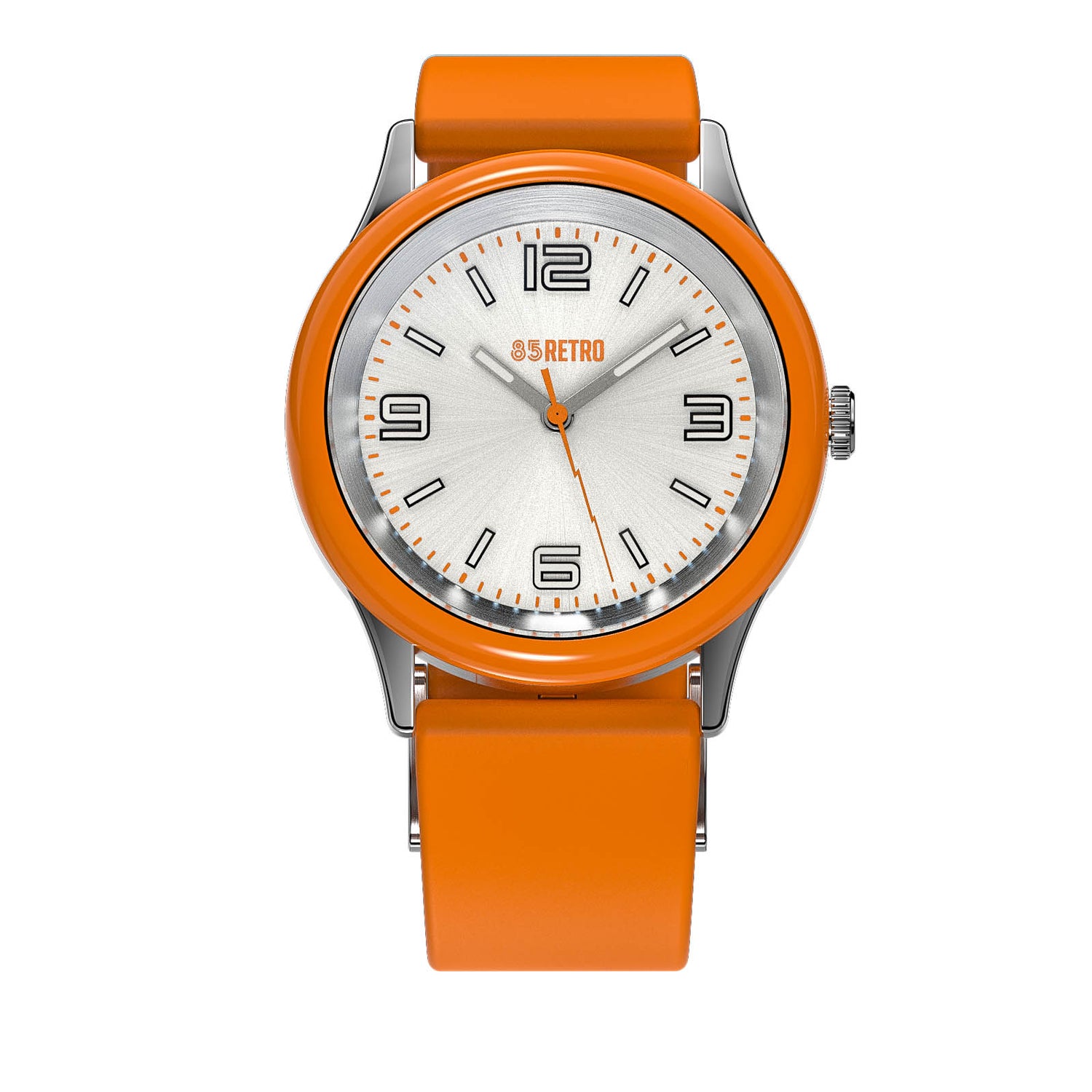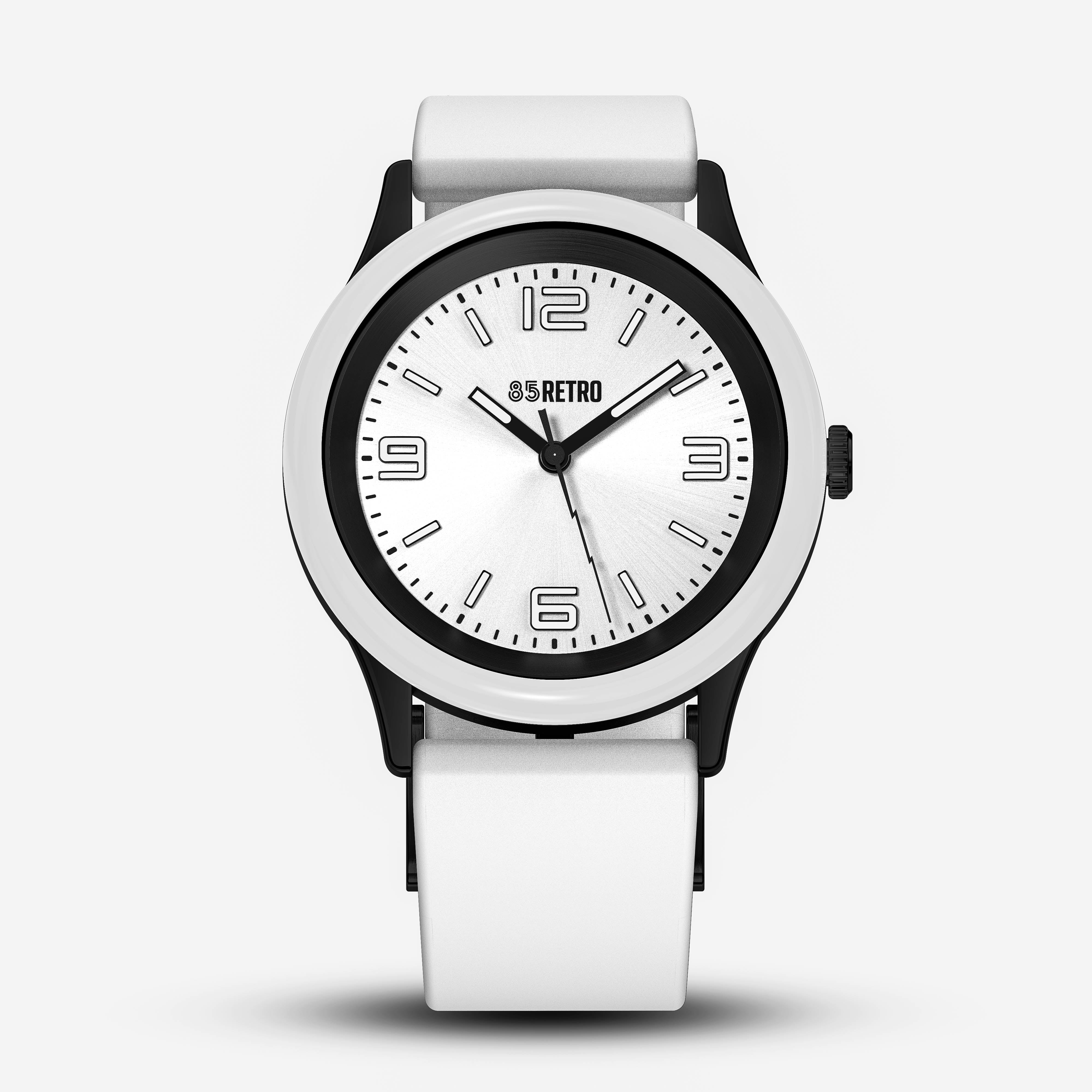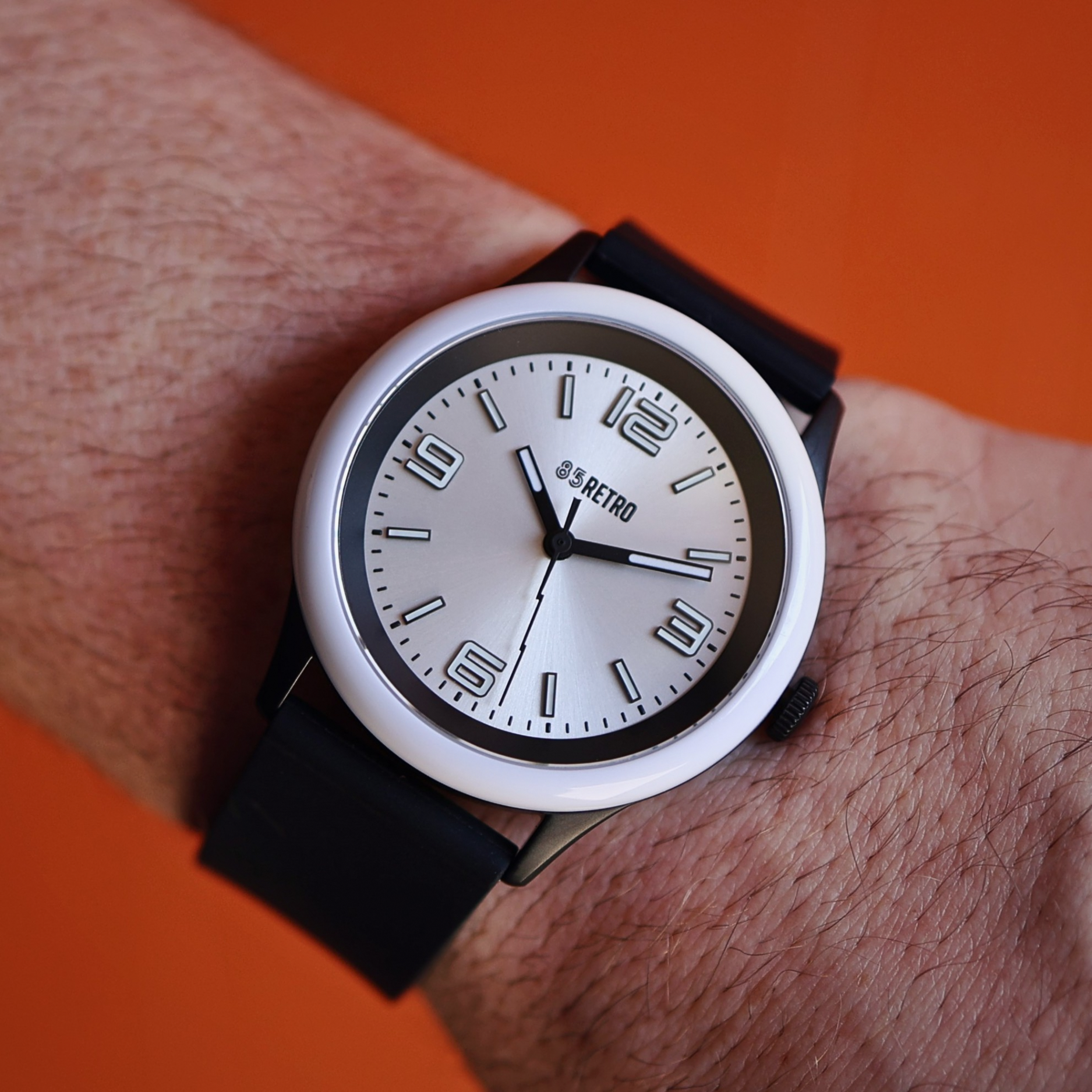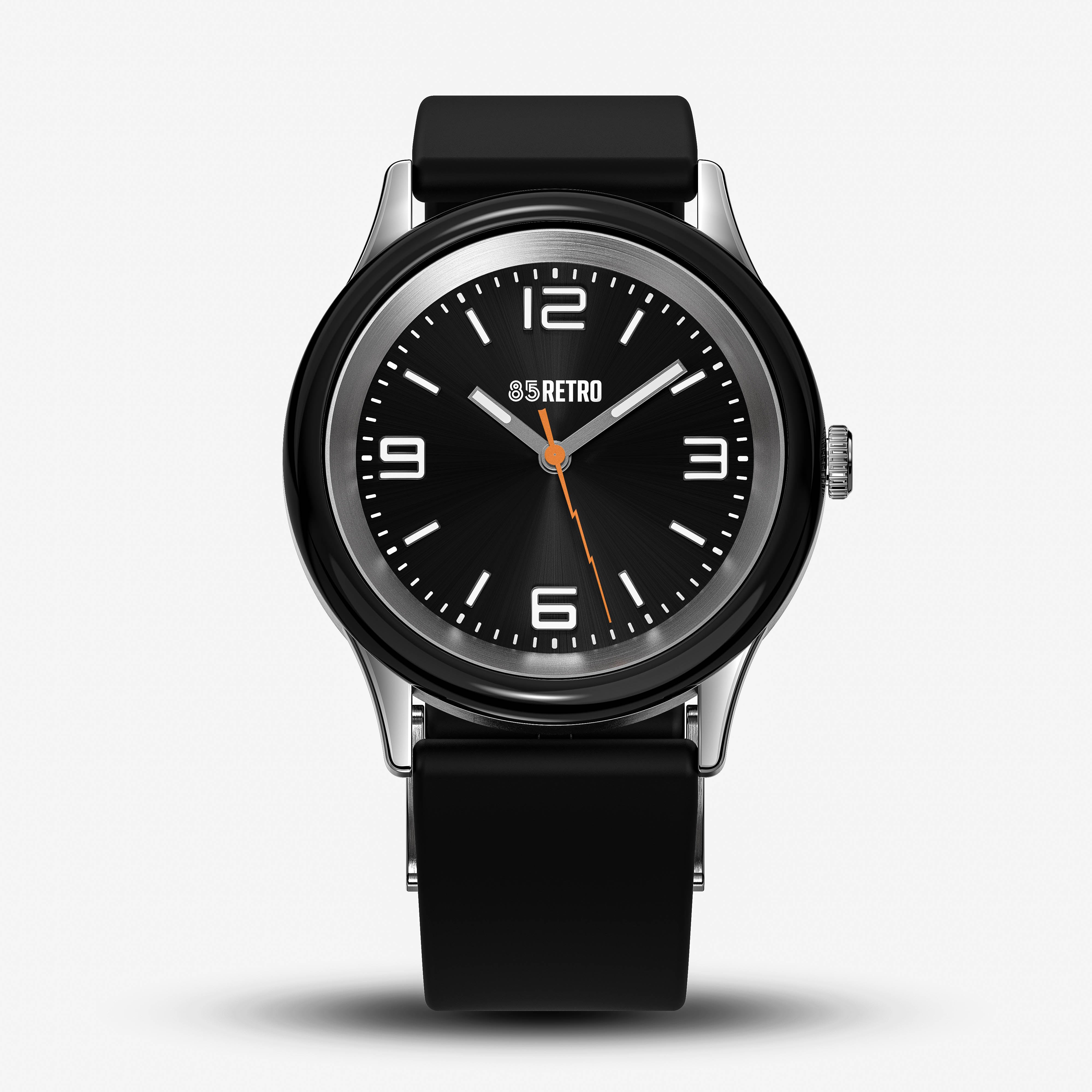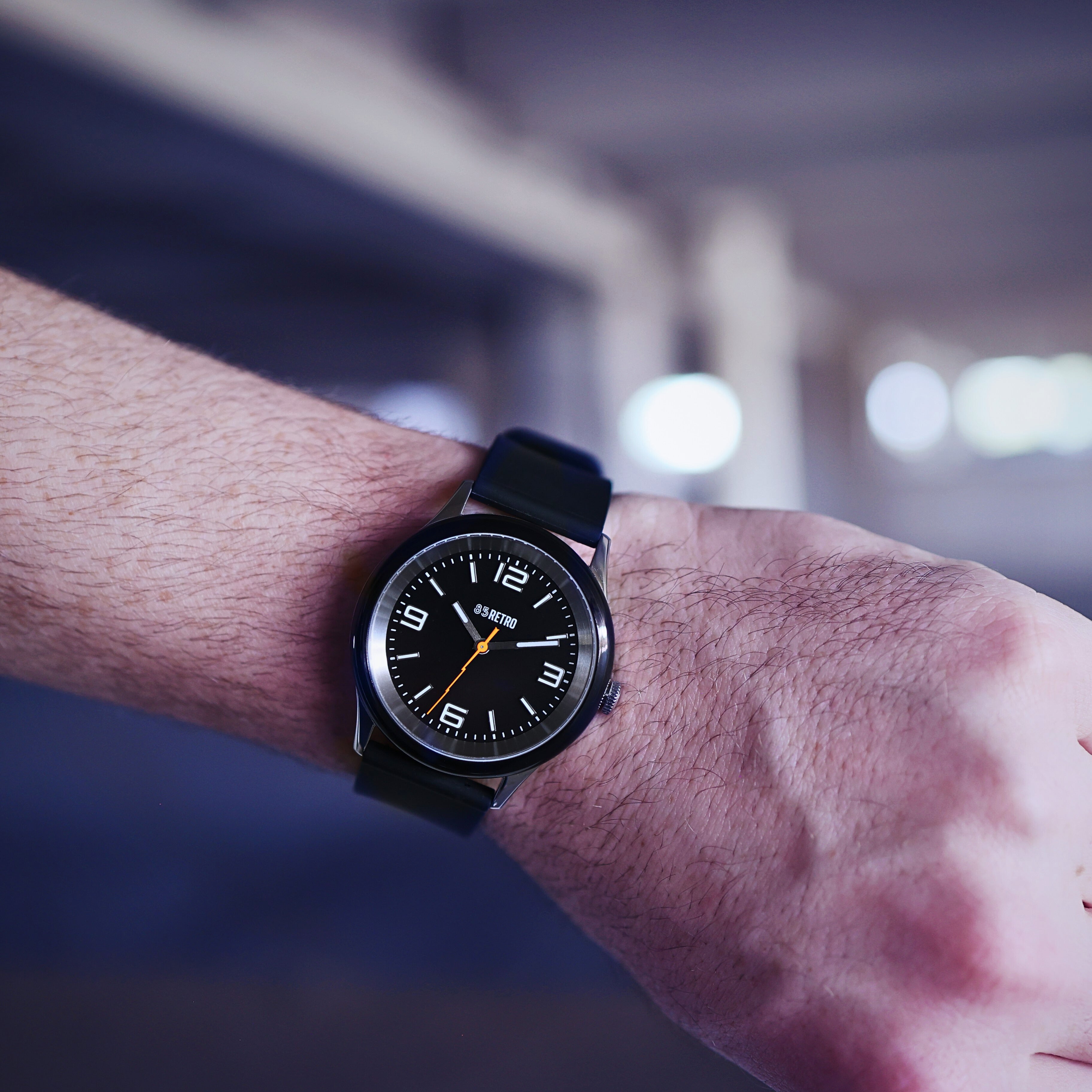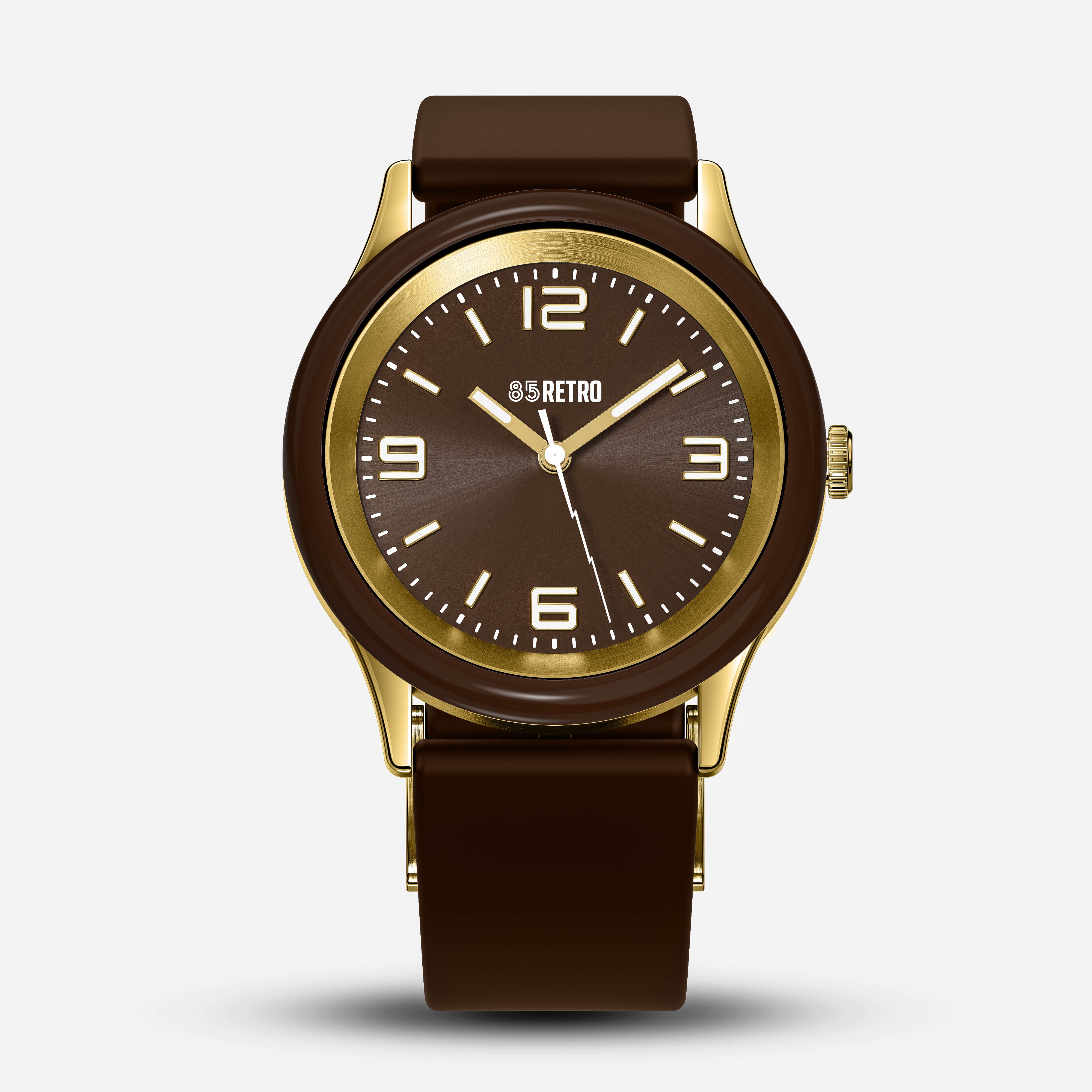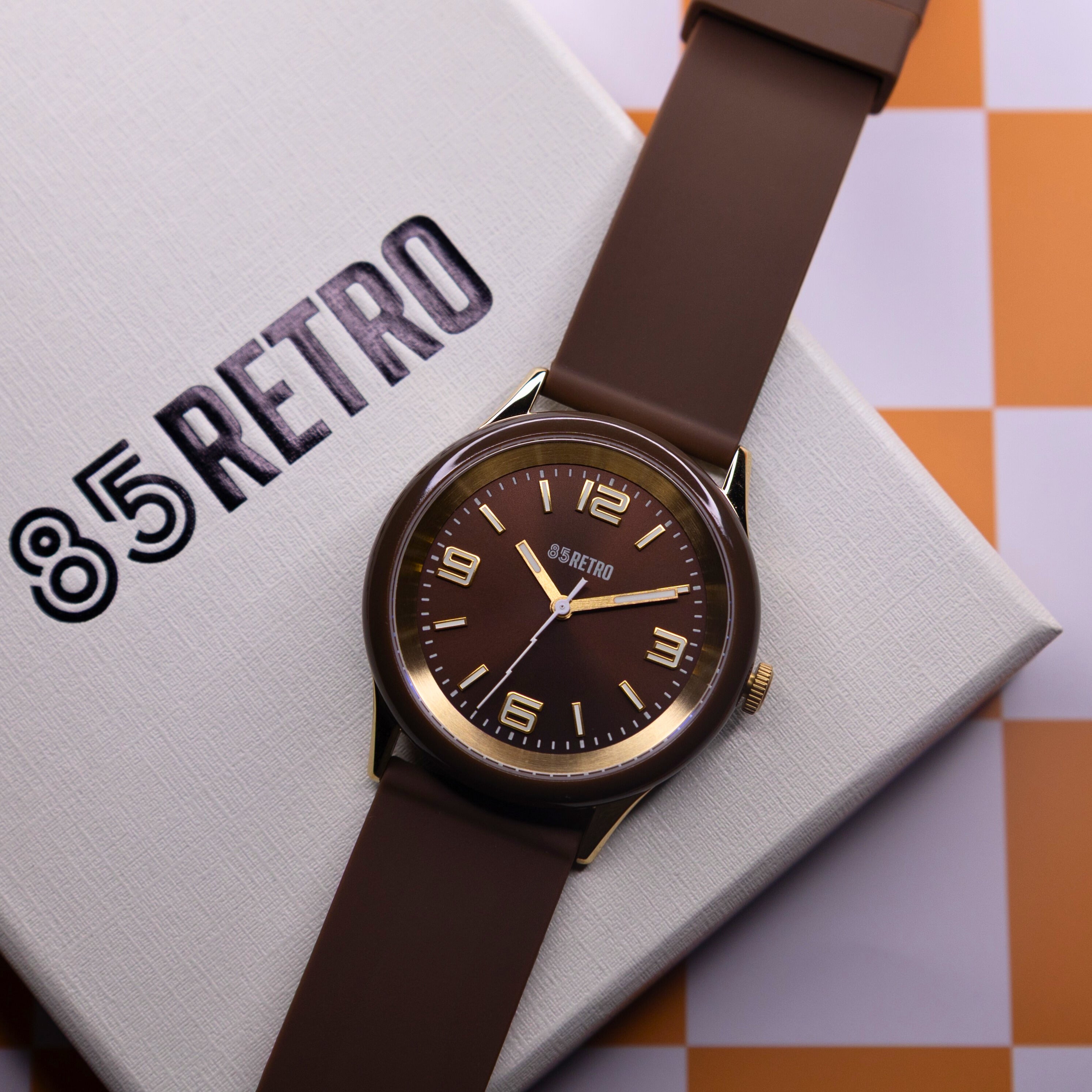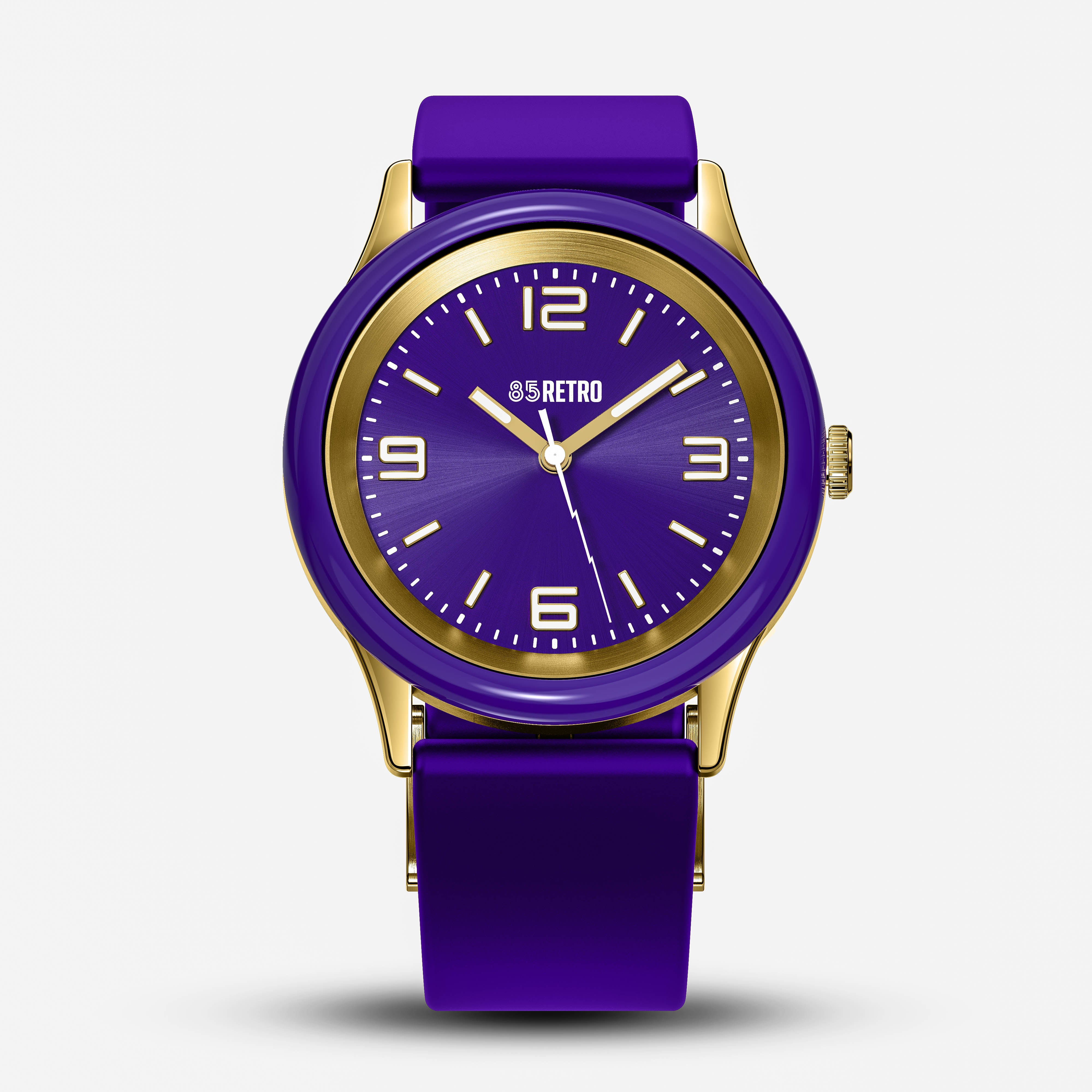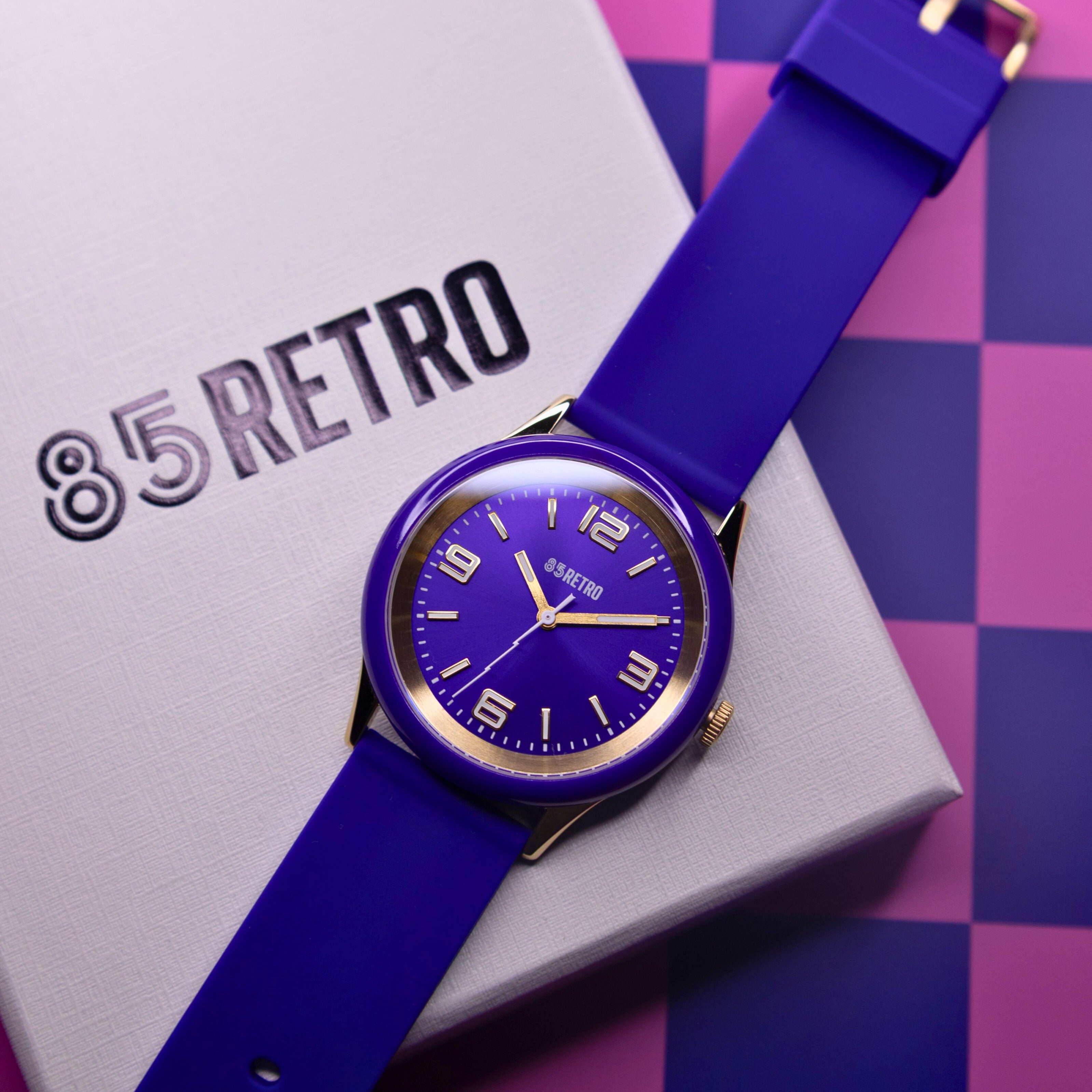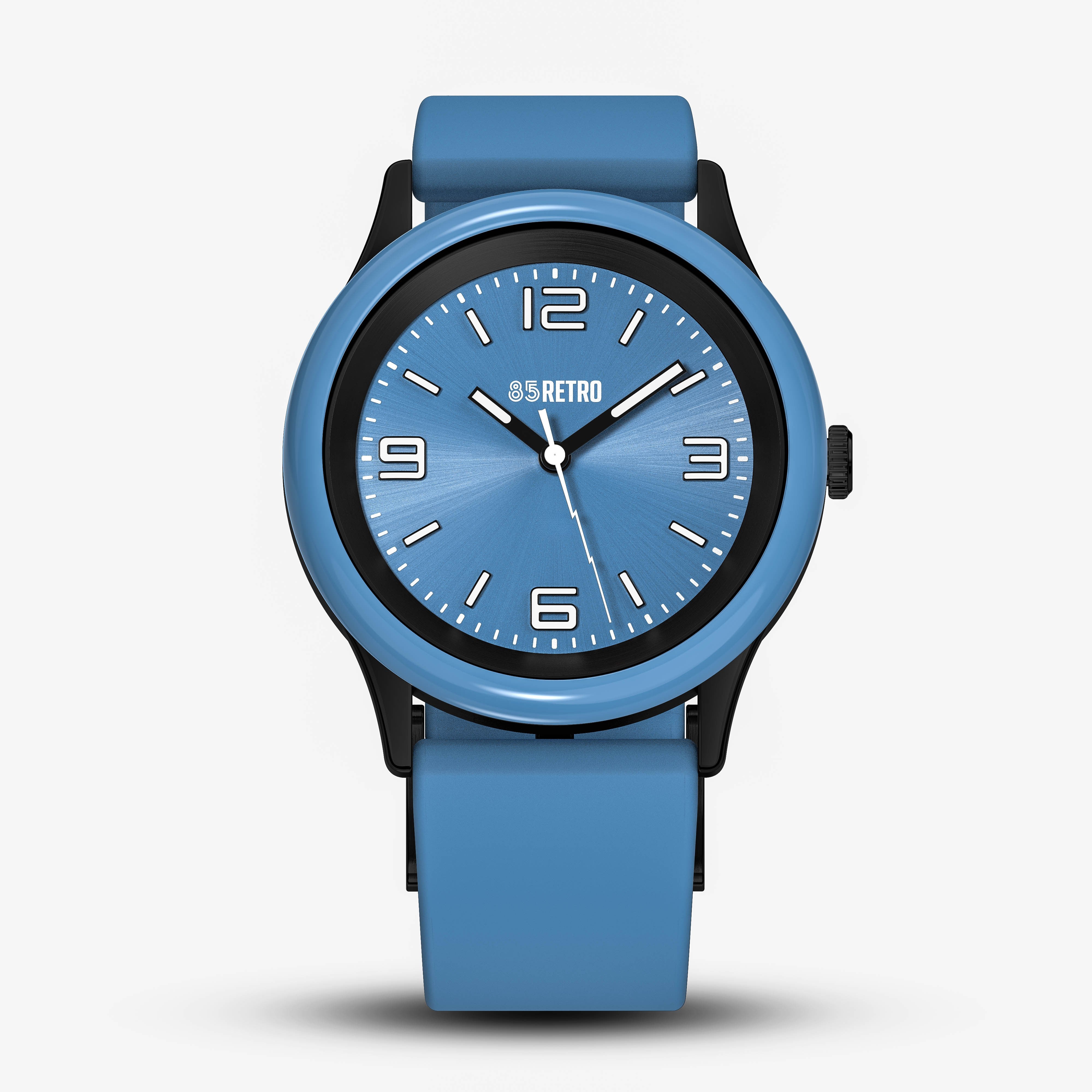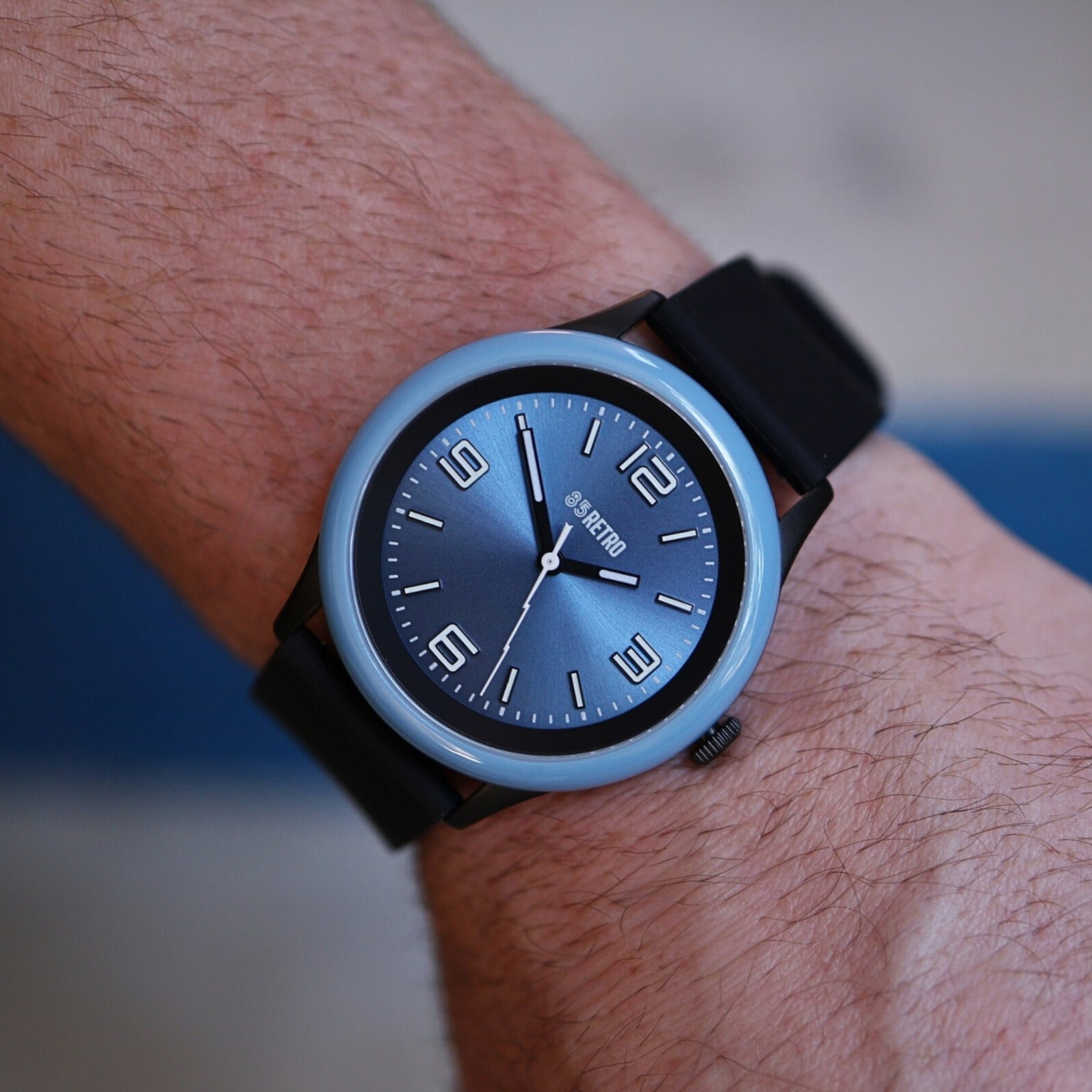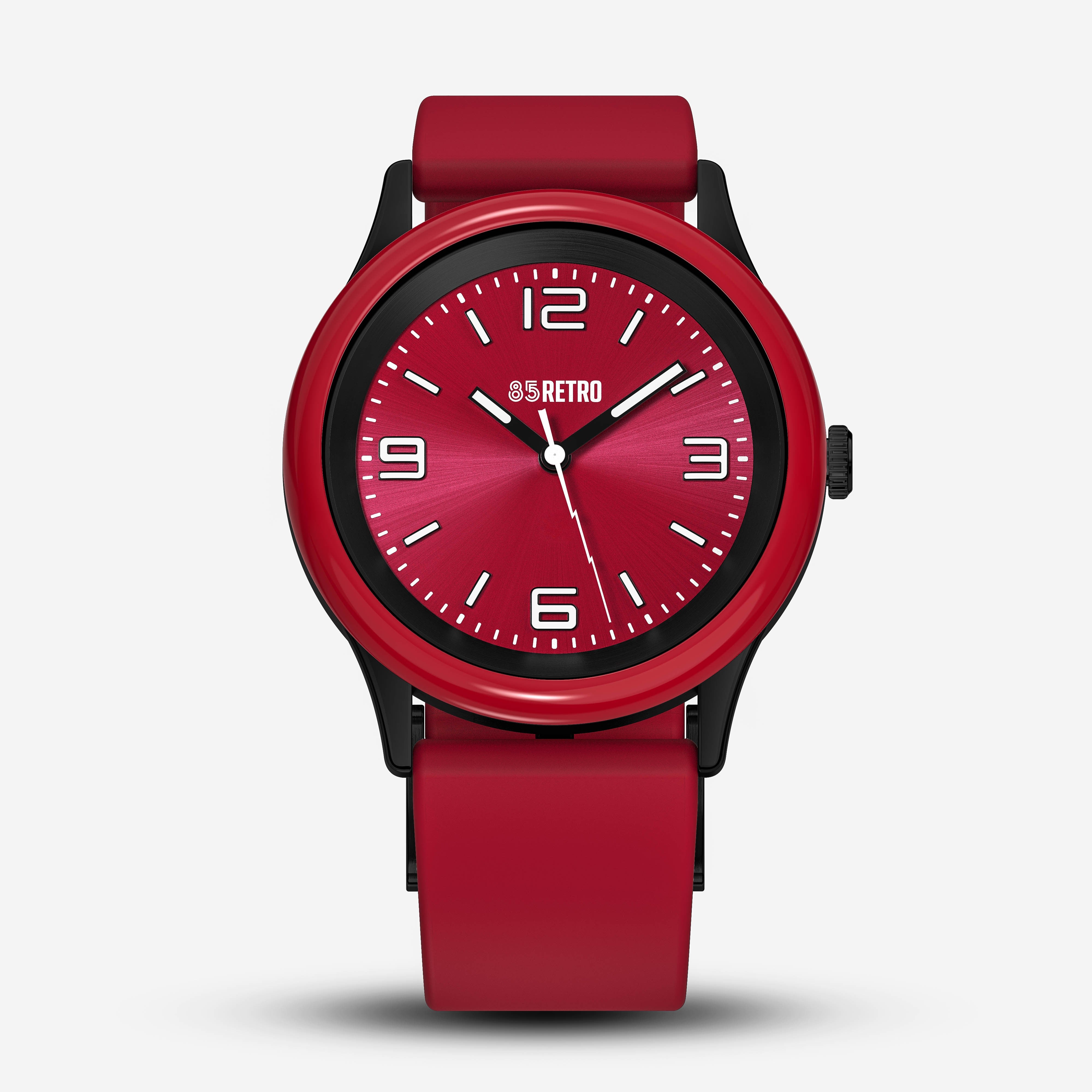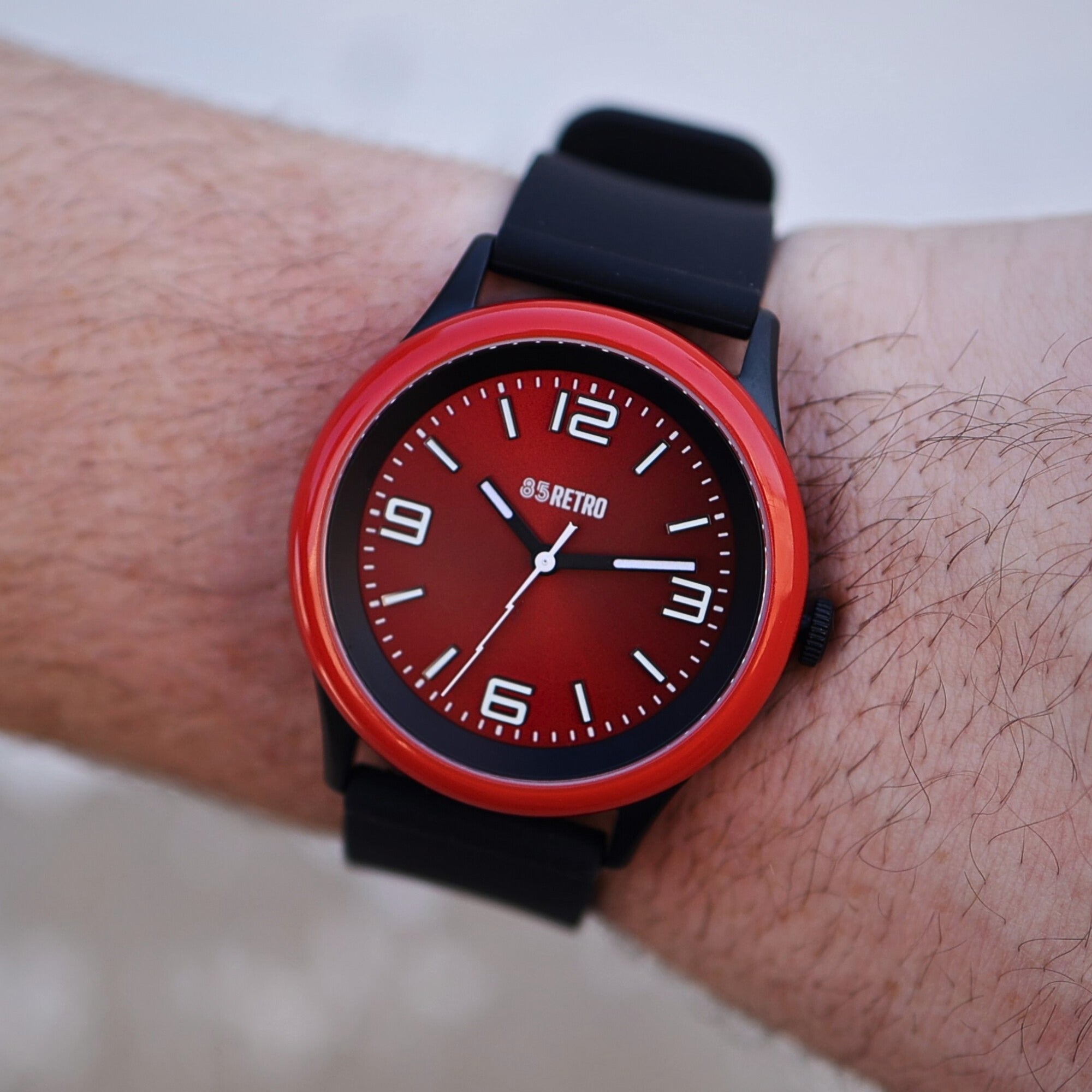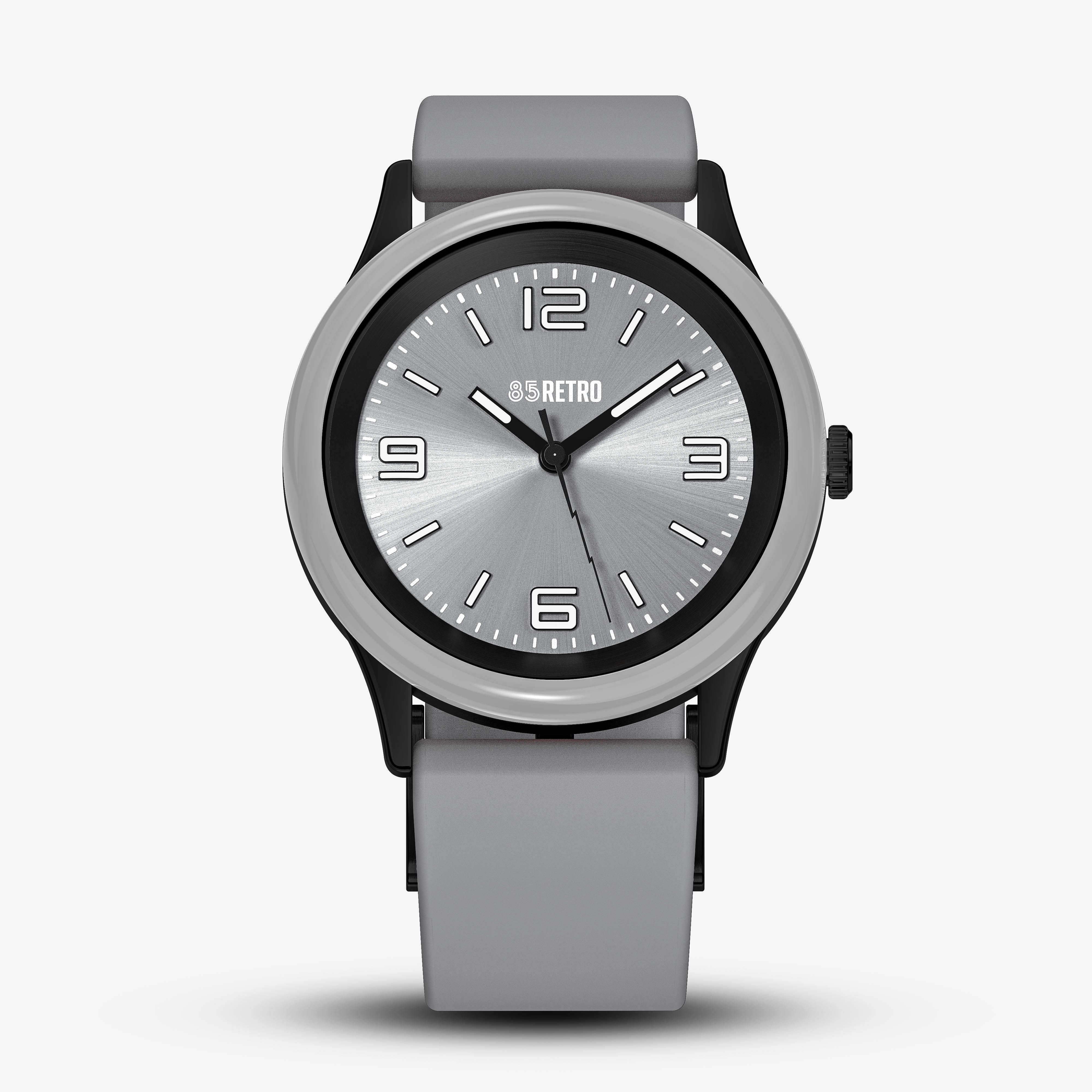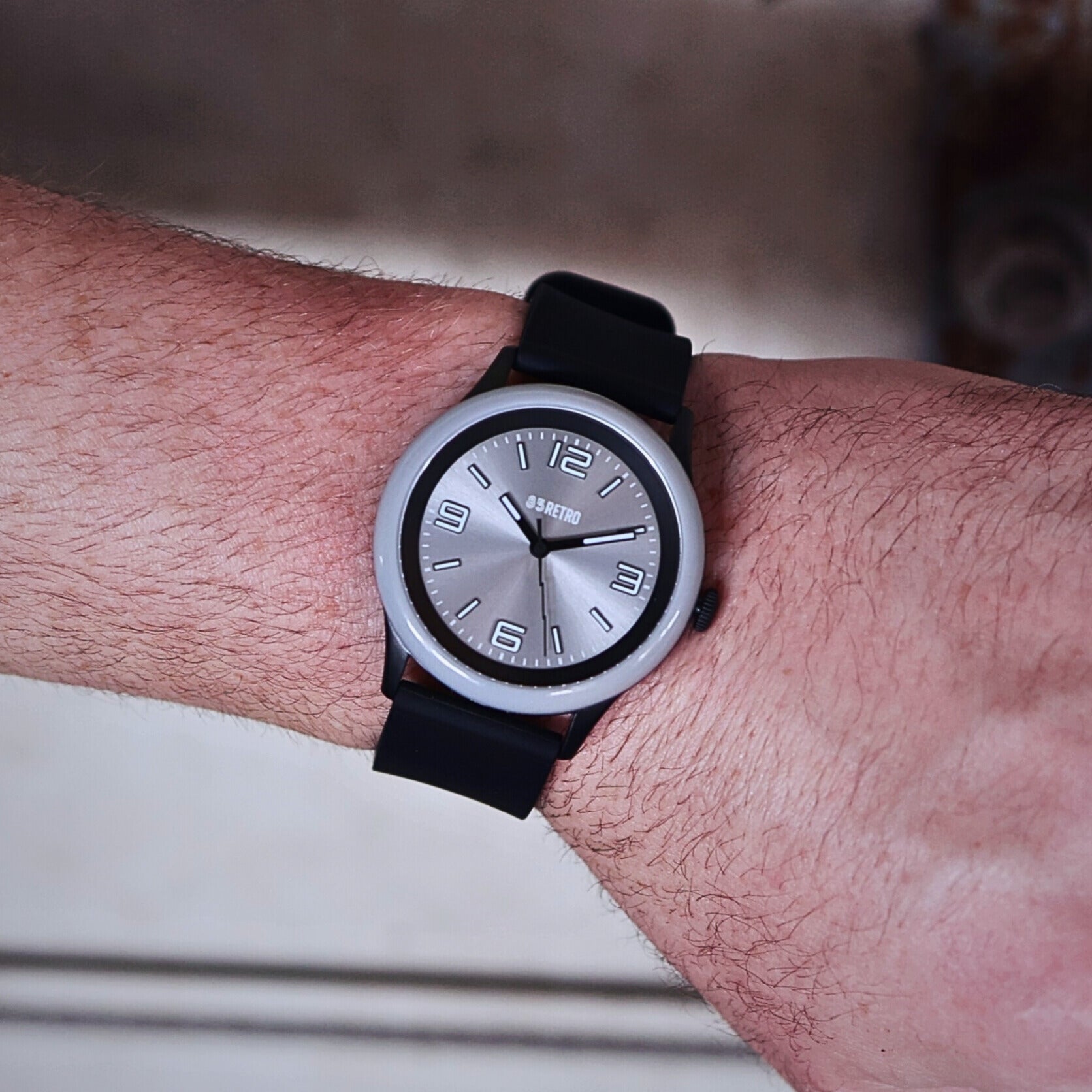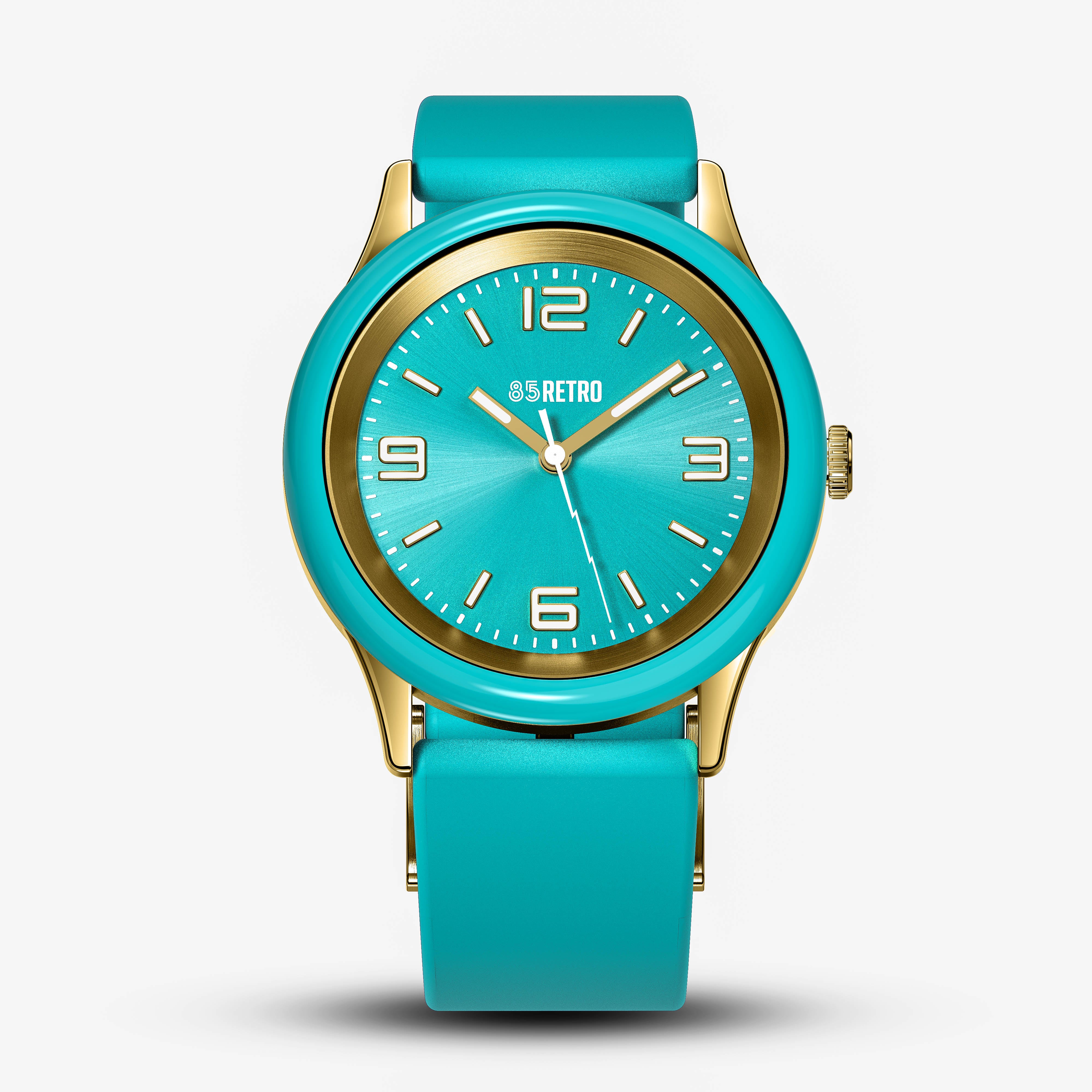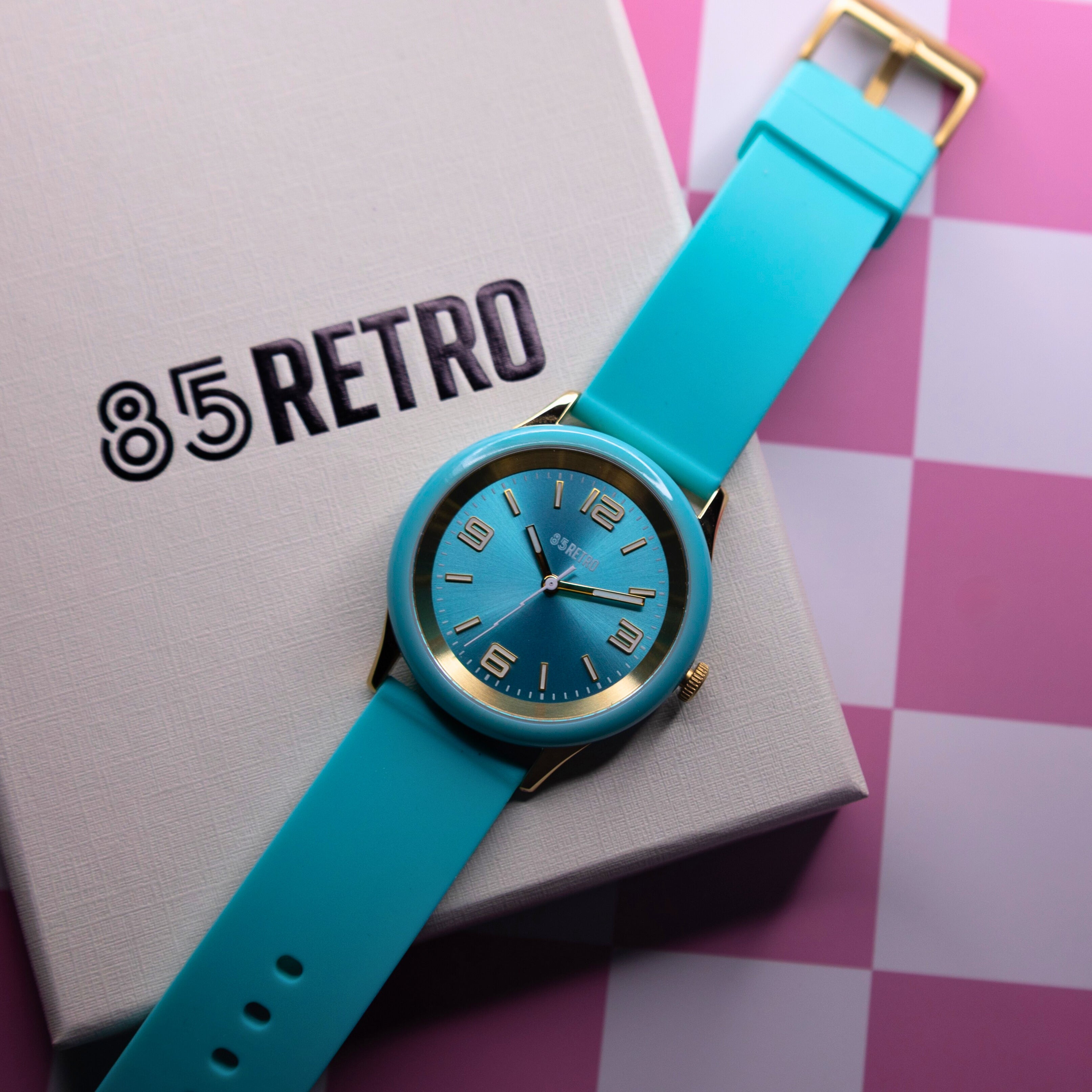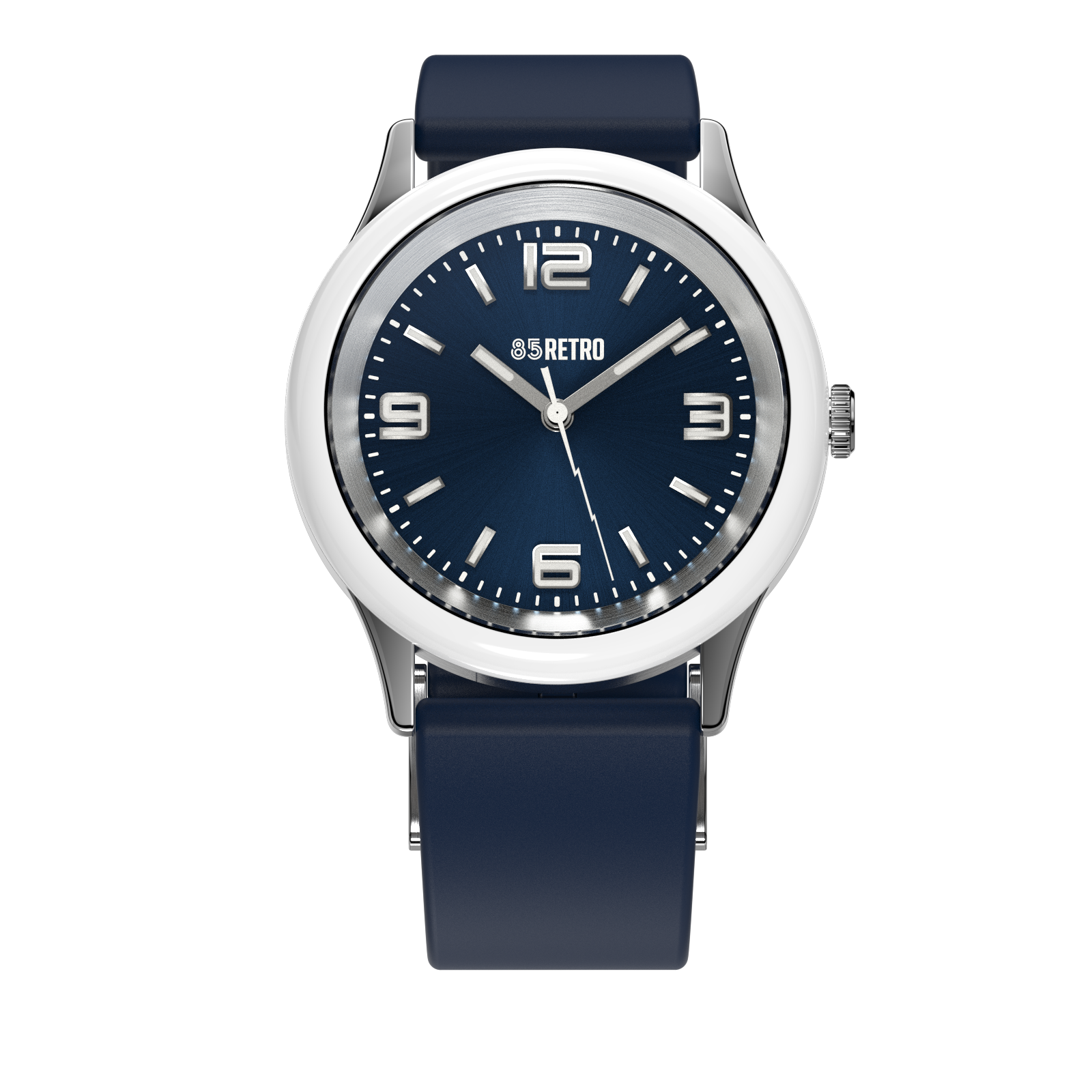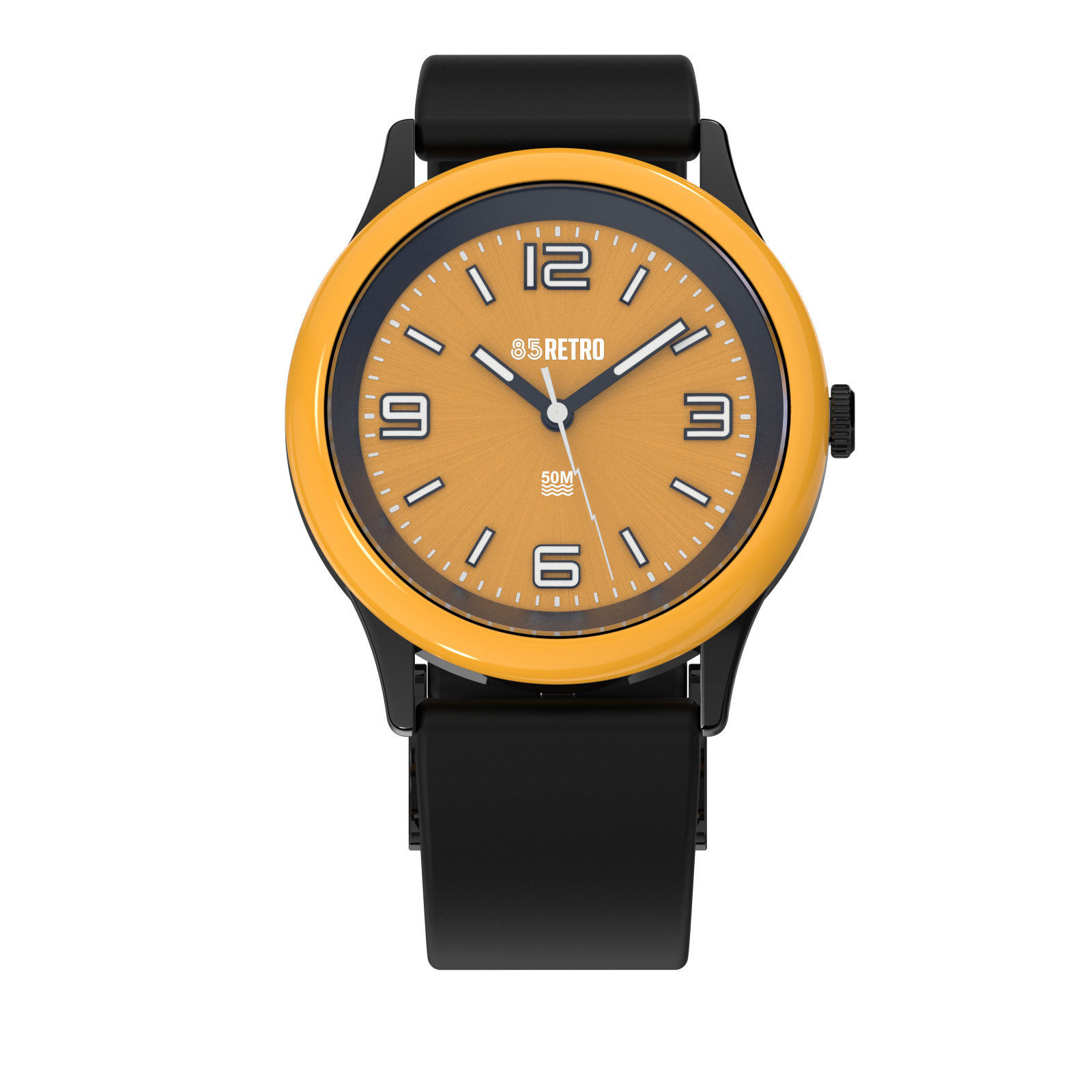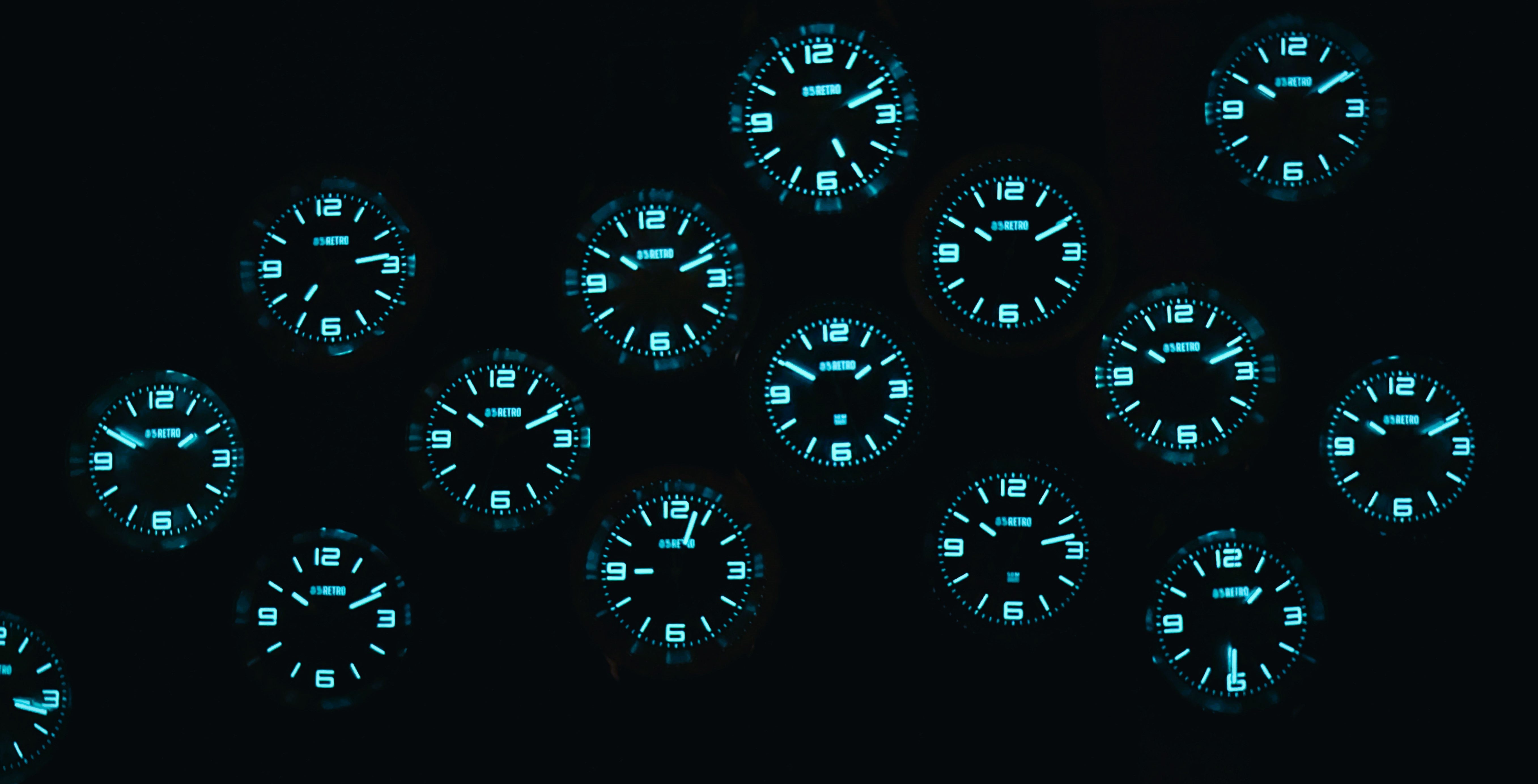Men’s watches have evolved significantly over the years, transitioning from purely functional timepieces to essential style accessories. From classic designs that have stood the test of time to contemporary trends that push the boundaries of fashion, the journey of men’s watches is a fascinating blend of tradition and innovation. Here’s a look at how men’s watches have evolved from classic to contemporary, and how these trends continue to shape the way we accessorize today, especially when paired with sneakers and colorful apparel.
1. The Classic Era: Timeless Designs and Iconic Brands
The classic era of men’s watches is defined by timeless designs that prioritize elegance and simplicity. Brands like Rolex, Omega, and Patek Philippe set the standard with their iconic pieces, featuring clean dials, leather straps, and understated details that emphasized functionality and refinement. These watches were often worn with formal attire, reflecting a time when watches were seen as symbols of status and sophistication.
Classic watches typically featured round or rectangular cases, minimalistic hour markers, and slim profiles that fit comfortably under dress shirt cuffs. Despite the rise of digital technology, these classic designs remain popular today, offering a sense of nostalgia and a connection to traditional craftsmanship. Their understated elegance makes them versatile enough to pair with modern outfits, including stylish sneakers and smart-casual ensembles.
2. The Quartz Revolution: Precision and Accessibility
The quartz revolution of the 1970s marked a significant shift in the watch industry, introducing quartz movements that offered greater accuracy and affordability compared to traditional mechanical watches. Brands like Seiko and Citizen led the charge, making high-quality watches accessible to a broader audience. Quartz watches brought a new level of precision and required less maintenance, making them popular for everyday wear.
This era also saw an expansion in watch design, with more diverse styles and materials becoming available. The increased accessibility and variety allowed wearers to experiment with different looks, including pairing watches with casual outfits and sneakers. Quartz watches paved the way for the integration of watches into daily fashion, moving beyond the realm of formal accessories.
3. The Rise of Digital Watches: Functionality Meets Fashion
The 1980s and 1990s saw the rise of digital watches, with brands like Casio and Timex introducing models that featured digital displays, alarms, stopwatches, and even calculators. These watches became synonymous with functionality and were embraced by athletes, tech enthusiasts, and everyday users alike. The digital watch era brought a new, sportier aesthetic that matched the growing popularity of athletic and casual wear.
Digital watches also introduced bold colors and durable materials like resin and rubber, aligning with the emerging streetwear trends of the time. Their playful, tech-forward designs made them a natural fit for sneaker culture, where innovation and individuality are celebrated. Today, digital watches continue to be a staple for those who value both style and functionality, making them a perfect match for sneakers and sporty outfits.
4. The Luxury Sports Watch: Blending Elegance and Robustness
In the late 20th century, luxury sports watches emerged, blending the elegance of traditional timepieces with the durability and functionality of sports watches. Models like the Audemars Piguet Royal Oak and the Rolex Submariner set new standards, featuring robust materials like stainless steel, sapphire crystal, and water resistance, while maintaining a sophisticated aesthetic.
These watches were designed to be worn in a variety of settings, from the boardroom to the beach, embodying the versatility that modern consumers crave. Their ability to complement both formal and casual attire, including sneakers, made them highly desirable. Luxury sports watches remain popular today, appealing to those who seek a watch that offers both high-end style and everyday practicality.
5. The Revival of Retro: Nostalgia in Modern Watchmaking
In recent years, the watch industry has seen a resurgence of retro-inspired designs, as brands draw on their archives to create modern interpretations of classic models. This trend reflects a broader cultural nostalgia for the aesthetics of the past, seen in everything from fashion to music and film. Watches like the 85RETRO™ Model 1 embrace this trend, offering vintage-inspired designs with contemporary updates that appeal to today’s style-conscious consumers.
Retro watches often feature bold colors, unique shapes, and distinctive details that harken back to earlier decades. They pair well with vintage sneakers and streetwear, allowing wearers to create cohesive looks that blend old and new. The revival of retro watches underscores the enduring appeal of classic design elements, reimagined for a modern audience.
6. The Rise of Smartwatches: Technology Meets Style
The advent of smartwatches has revolutionized the watch industry once again, merging technology with traditional watchmaking. Brands like Apple, Samsung, and Garmin have introduced smartwatches that offer a wide range of features, from fitness tracking and GPS navigation to customizable watch faces and smartphone connectivity. Smartwatches cater to the needs of a tech-savvy generation that values convenience and connectivity.
While initially focused on functionality, smartwatch designs have evolved to include sleek, stylish options that rival traditional watches in terms of aesthetics. Interchangeable bands and customizable faces allow users to personalize their watches, making them suitable for both workouts and social events. Smartwatches pair seamlessly with athleisure and sneakers, reflecting the current trend of blending fashion with functionality.
7. Bold Colors and Personalization: Expressing Individuality
Contemporary watch trends are all about self-expression, with bold colors, unique patterns, and personalized options taking center stage. Watches like the 85RETRO™ Model 1, with its fresh colorways and interchangeable straps, embody this trend, allowing wearers to tailor their watch to their personal style. The emphasis on individuality has expanded the range of watch styles available, making it easier than ever to find a timepiece that complements your favorite sneakers and colorful apparel.
This trend also includes limited edition releases and collaborations with artists, designers, and brands, offering unique pieces that resonate with specific cultural or fashion movements. These watches serve as both functional accessories and collectible items, appealing to enthusiasts who see their watch as a key part of their personal brand.
8. Sustainability and Eco-Friendly Innovations
As awareness of environmental issues grows, sustainability has become a significant trend in watchmaking. Brands are increasingly using recycled materials, renewable energy sources, and eco-friendly packaging in their products. Watches like Citizen’s Eco-Drive, which harnesses light to power the movement, exemplify the shift towards greener practices in the industry.
Sustainable watches appeal to consumers who prioritize eco-conscious choices in their fashion and lifestyle. These watches often feature minimalist designs and neutral color palettes, making them versatile accessories that pair well with both sneakers and more formal footwear. The focus on sustainability aligns with broader trends towards responsible consumption and mindful fashion.
9. The Ongoing Appeal of Minimalism
Minimalism continues to be a popular trend in watch design, characterized by clean lines, uncluttered dials, and simple straps. This aesthetic appeals to those who prefer a subtle, refined look that complements a wide range of outfits. Minimalist watches are perfect for pairing with casual sneakers and athleisure, offering a sleek, understated accessory that enhances your overall style without overwhelming it.
Brands like Skagen and Daniel Wellington have built their reputations on minimalist designs, offering affordable luxury that appeals to modern tastes. The 85RETRO™ Model 1 also captures this trend, balancing retro elements with a minimalist approach that makes it a versatile choice for any wardrobe.
10. The Future of Men’s Watches: Innovation and Tradition
As the watch industry continues to evolve, the future of men’s watches will likely see a blend of innovation and tradition. Technological advancements will drive the development of new features and materials, while classic design elements will continue to provide a timeless appeal. The trend towards personalization and sustainability will also play a key role, as consumers seek watches that reflect their values and individual style.
Whether you’re drawn to the heritage of classic timepieces or the cutting-edge designs of contemporary watches, the evolution of men’s watches offers something for everyone. Explore options like the 85RETRO™ Model 1 to find a watch that fits your unique style, complementing your sneakers, colorful apparel, and everyday look. With the right watch on your wrist, you’re not just keeping time—you’re making a statement that spans generations.

